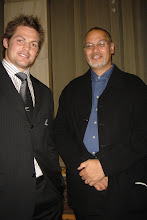As a result the provincial Governments were desperate to find gold somewhere within their regions. Several offered rewards to anyone who could find it. New Zealand appeared to have the geology (although that was a relatively new science) so it simply appeared to be a matter of finding it. Early discoveries of ‘colour’ were made in the Coromandel but were unworkable.
 Eventually as you know an Australian Gabriel Read discovered gold in Otago in May 1861 and the rush was on. The province exploded, prospectors arrived from all around the world, but especially from Victoria. Many were keen to escape the taxation and corruption of the Australian fields. In Otago they were taxed less and received larger claims to boot.
Eventually as you know an Australian Gabriel Read discovered gold in Otago in May 1861 and the rush was on. The province exploded, prospectors arrived from all around the world, but especially from Victoria. Many were keen to escape the taxation and corruption of the Australian fields. In Otago they were taxed less and received larger claims to boot.This was alluvial gold, which could initially be easily found by individuals. Later small groups or collectives formed to extract the gold from the riverbanks.
Eventually gold was also found in the West Coast, Nelson and again in the Coromandel. When news of the discovery on the Coromandel arrived in Auckland, the male population of the city disappeared overnight, emptying stores of pans, shovels and food. Many were disappointed to find the gold locked away in the rock.
 These later discoveries were quartz based gold, which required even larger amounts of money, the days of the lone prospector were numbered. Companies formed in Christchurch, Wellington or Auckland were formed to buy the equipment needed to extract the rock and crush it. This needed water or steam power, and the giant stampers which kept Grahamstown (Thames) awake 6 days a week.
These later discoveries were quartz based gold, which required even larger amounts of money, the days of the lone prospector were numbered. Companies formed in Christchurch, Wellington or Auckland were formed to buy the equipment needed to extract the rock and crush it. This needed water or steam power, and the giant stampers which kept Grahamstown (Thames) awake 6 days a week.Gold remained an important export commodity for much of the century. Its importance lay in the changes it made to the physical and social fabric of New Zealand. Much of the South Island was now settled with towns spread from north to south and east to west. Much of the island had been explored and for a time Dunedin was the country’s largest city. South island run-holders were able to expand as the population gave them a market for their meat. The miners also brought with them a belief in equality and the early ideas of mateship that were also developing in the bush settlements of the north.





No comments:
Post a Comment